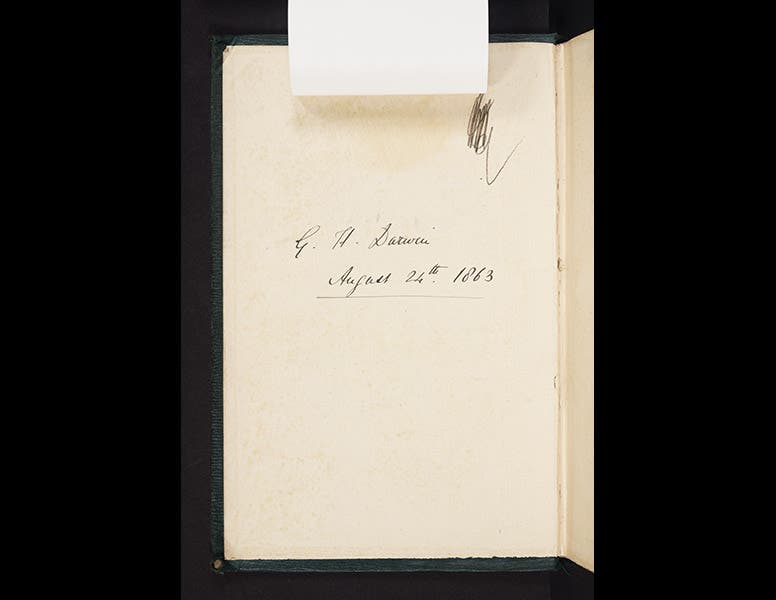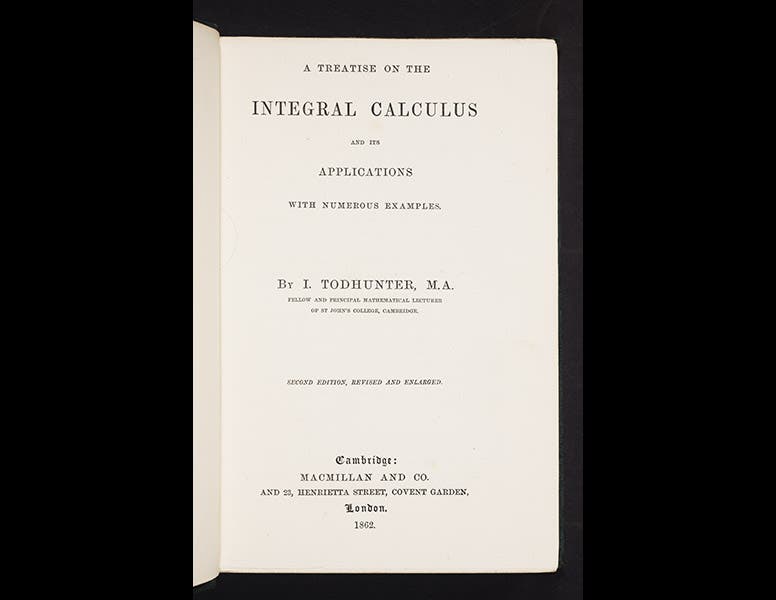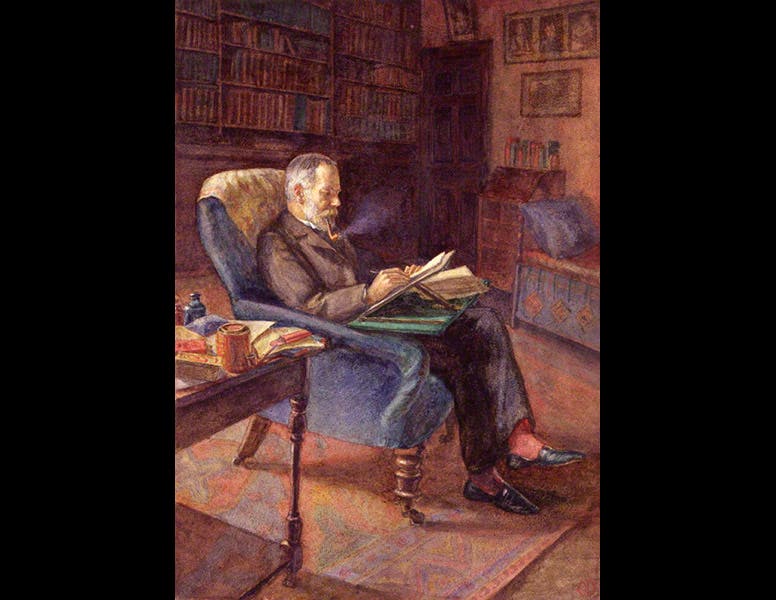Scientist of the Day - George Howard Darwin




George Howard Darwin, an English astronomer, was born July 9, 1845. George was the most successful scientific scion of Charles and Emma Darwin, although he chose astronomy for his profession, rather than the natural sciences. In 1878, George made a surprising contribution to theories of the origin of the moon. The most popular hypothesis at the time was that the Moon formed at the same time as the Earth, from the same solar nebula that gave rise to all the planets and the sun. George, however, understood that the Earth is slowing ever so slightly in its rotation, due to tidal friction, and is therefore losing angular momentum. Since the angular momentum of the Earth-Moon system is conserved, the Moon must be gaining angular momentum to compensate, and it can only do by moving outward in its orbit. And if the Moon is getting farther and farther away, in past eons it must have been closer. Darwin ran the clock backwards and calculated that at some point the Moon and the Earth were practically touching. So Darwin proposed what we call the “fission theory” of the Moon’s origin, that the Moon split off from the Earth, probably taking a large chunk out of what is now the Pacific Ocean, and has been receding from the Earth ever since. We now understand that the Moon did not calve spontaneously from the Earth’s side, but was rather the product of a colossal collision between the early Earth and a Mars-size impacting planet. Still, Darwin’s physics was correct, and the Moon has been receding from the Earth for over 4 billion years.
Darwin published over 80 papers in various scientific journals, most we which we have in our serials collection. But it is often more convenient to consult them in his 5-volume Scientific Papers (1907-16), because Darwin thoughtfully grouped them by subject, so that all the papers on “Tidal Friction and Cosmology”, for example, are in the first volume (second image).
The Linda Hall Library has five books from George Darwin’s library, each signed and dated “G. H. Darwin;” all of them are math textbooks that he acquired while at Trinity College, Cambridge, in the early 1860s. An example is Isaac Todhunter, A Treatise on the Integral Calculus (1862); the inside front cover with his signature (third image) and title page (fourth image) are shown above.
The watercolor portrait of Sir George was drawn by his daughter, Gwen Raverat, and is now in the National Portrait Gallery, London (first image). There is a brass plaque honoring Darwin (in Latin) in Trinity College chapel (fifth image).
Dr. William B. Ashworth, Jr., Consultant for the History of Science, Linda Hall Library and Associate Professor, Department of History, University of Missouri-Kansas City. Comments or corrections are welcome; please direct to ashworthw@umkc.edu.





![Using an astrolabe to measure the depth of a well, woodcut in Elucidatio fabricae vsusq[ue] astrolabii, by Johannes Stöffler, 1513 (Linda Hall Library)](https://assets-us-01.kc-usercontent.com:443/9dd25524-761a-000d-d79f-86a5086d4774/a998eb50-55d2-4a88-ace2-a50aa5fa86e7/Stoffler%201.jpg?w=210&h=210&auto=format&fit=crop)

